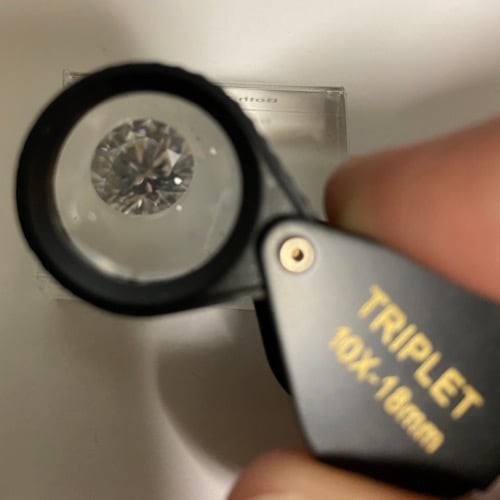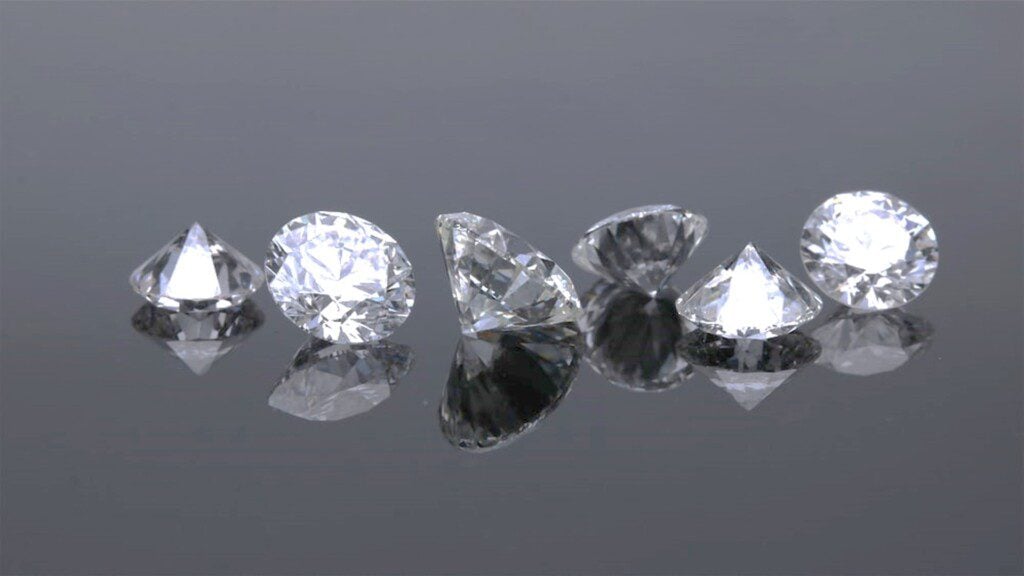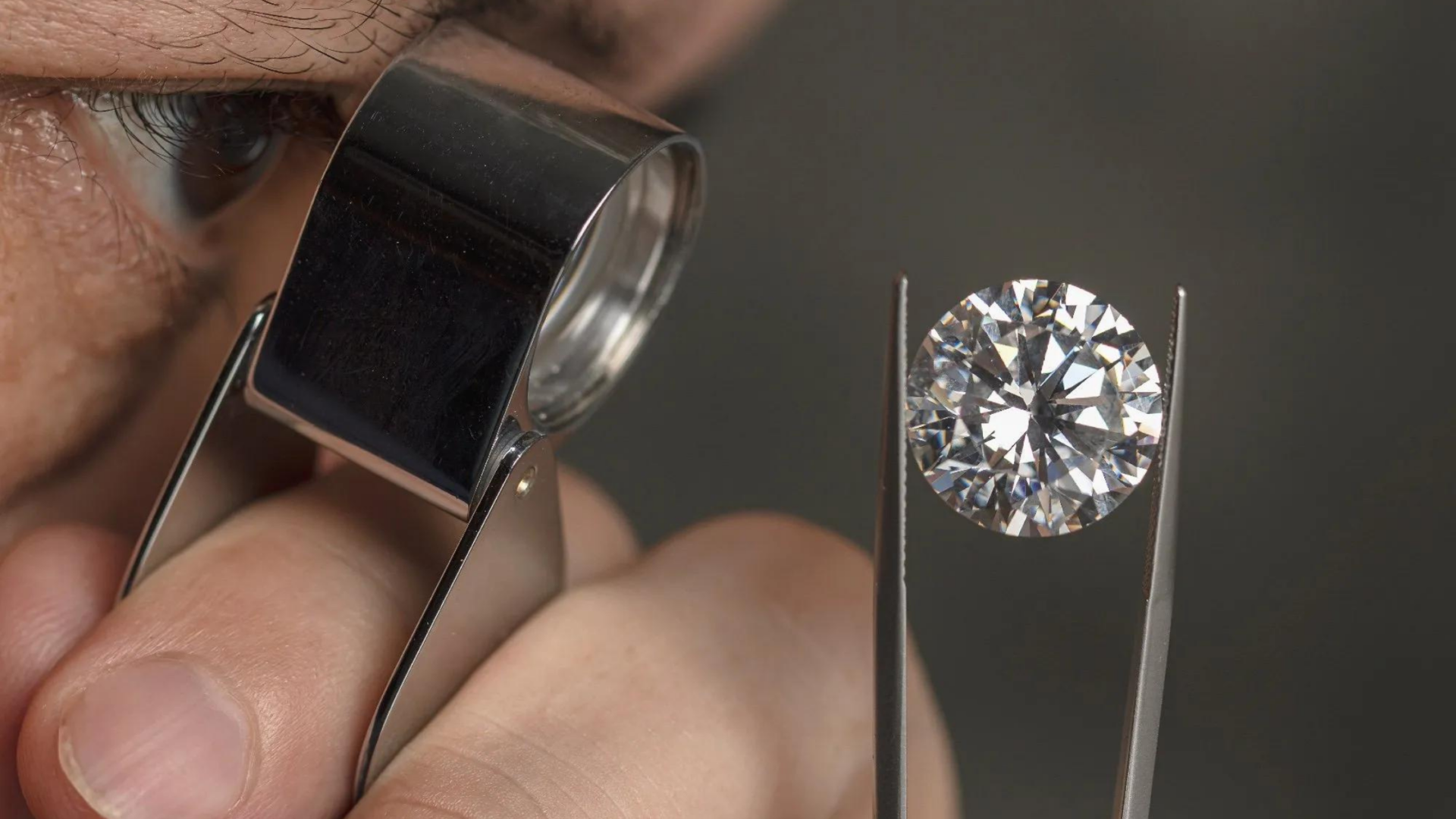Are Lab-Grown Diamonds Fake?
No. Lab-grown diamonds are real diamonds. They are not simulants like CZ or moissanite, which you can test for with the methods below. Lab-grown diamonds will pass every test as real diamonds. Read more on our education page covering Lab-Grown Diamonds.
Home Tests
Is my diamond fake or real? Many people want quick and easy ways to answer this question. Some methods pass. Others fail. Below are some of the tests suggested, and what we think about them.
The Water Test
The basis behind this test is that a real diamond is incredibly dense, so this test will allow you to assess the density of your gemstone from your home. Fill a tumbler up ¾ full with water and a drop the loose stone in. If it floats, it is a fake – if it sinks then you are back to step one.
| TRUTH: This is not a great test as most diamond imitations will sink, just like a diamond will. |
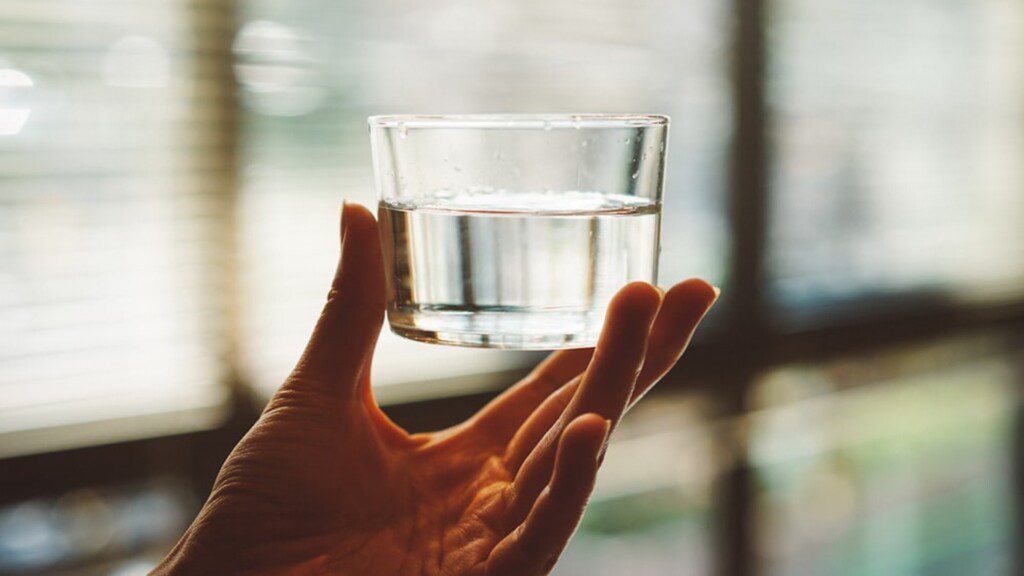
The Heat Test
This test sounds scary but, if the diamond is real, you have nothing to fear.* To begin, fill a glass with cold water and put on a pair of fireproof gloves. Heat the stone for around 30-40 seconds then immediately submerge it in the cold water. A real diamond will show no reaction; a fake is likely to shatter. This rapid expansion and contraction of heat will cause weak materials like cubic zirconia to crack and shatter. A diamond is resistant to heat tests as the heat quickly disperses, leaving it unaffected by the drastic changes in temperature. Be sure to carry out this test as safe as possible.
| TRUTH: Dangerous and not recommended. Heating a diamond in the air with an open flame most likely will cause the outside surface to become milky and cloudy. If it is not a diamond then that gem will likely be destroyed. |
The Fog Test
This is a less extreme test of the stone’s abilities to conduct heat. To carry out the fog test, hold the diamond between two fingers so that it can be clearly seen, and breathe on it. If the fog immediately dissipates, it is likely that the stone is a real diamond. If the fog remains for several seconds, it means that the stone is not effectively conducting heat and is a fake.
TRUTH: This only works for unset diamonds. Since most diamonds people own are set it will not work. But if you found what looks like a diamond, and you can get a similarly sized loose CZ (or glass gem), you can place them both on a piece of paper and breath on them. If the fog dissipates at the same pace as your CZ or glass stone they are both fakes. Take caution as some fakes, such as moissanite, may have similar dissipation times. |

The UV Light Test
If you have been researching certification and diamond quality, you may have heard the term fluorescence. This describes the phenomena of a diamond emitting a blue glow when viewed under UV light. This glow can range from faint to very strong. However, not all diamonds possess this quality, so an absence of this blue glow does not necessarily indicate that the diamond is a fake. It’s a fun test, but not the most conclusive.
TRUTH: This will work for about a quarter to a third of diamonds because most that do will fluoresce blue. Diamonds can fluoresce with other colors, but +90% of those that do go blue. The UV light used at nail salons as a hardener works well. Remember this is not a conclusive test. |
The Read-Through Test
The newspaper test, or read-through test, is one of the ways you can test refractivity (a diamond’s ability to bounce, bend and refract light). Place the stone upside down onto a newspaper over the lettering in a well-lighted area. Be sure that there are no shadows being cast over the stone or the newspaper. If you are able to read the letters (even if there is a slight blur) the stone is fake. A real diamond will refract the light in multiple directions from its various facets. This refraction will prevent you from being able to see clearly through the diamond to read the lettering.
| TRUTH: This only works for unset, well-cut modern round diamonds. Take caution as it will not help with moissanite. |

The Dot Test
The dot test also examines the refractive properties of a stone. Draw a small dot on a piece of white paper with a pen. Lay the stone flat side down over the dot and ensure the area is well lit with no shadowing. Through the pointed end of the diamond, look down at the paper. If you can see the dot reflected inside the gemstone and it is circular, the diamond is fake. If you cannot see the dot or a circular reflection, it is likely that the diamond is real. Like the newspaper test, the powerful refractive properties of a natural diamond will allow the light to bounce in different directions, and this is why you will not see the dot through the diamond.
| TRUTH: This only works for unset, well-cut modern round diamonds. Take caution as it will not help with moissanite. |
The Sparkle Test
The sparkle test is a ‘by eye’ form of testing your diamond. This is pitched as a great way to gain a better understanding of the optical properties of a diamond, as well as help to indicate whether or not the diamond is a genuine, natural diamond. (A lab-grown diamond will be the same as a mined diamond).
Hold the diamond beneath a light source, such as a lamp, and examine how the light reflects off of the diamond. Is there a white, blinking quality to the diamond (scintillation)? Are there also reflections of rainbow light? We covet diamonds for these properties and taking the time to examine this will give you a lot of information about the stone.
This test is best performed with a point of comparison; for example, if you have cubic zirconia that you are able to compare with the diamond, you will be able to identify the striking differences between them. This test is not foolproof. A badly cut diamond that is heavily included and has a low color grading will not give the distinctive sparkle that expects from a diamond, and so the untrained eye may find it harder to identify these optical properties. Similarly, the quality of synthetic diamonds has improved greatly over the years, meaning that a diamond novice may be deceived (we will look closer at synthetic diamonds shortly).
| TRUTH: This is not a great test. It is well known that many jewelers fail at this test, especially when comparing diamond and moissanite. Don’t rely on it. |
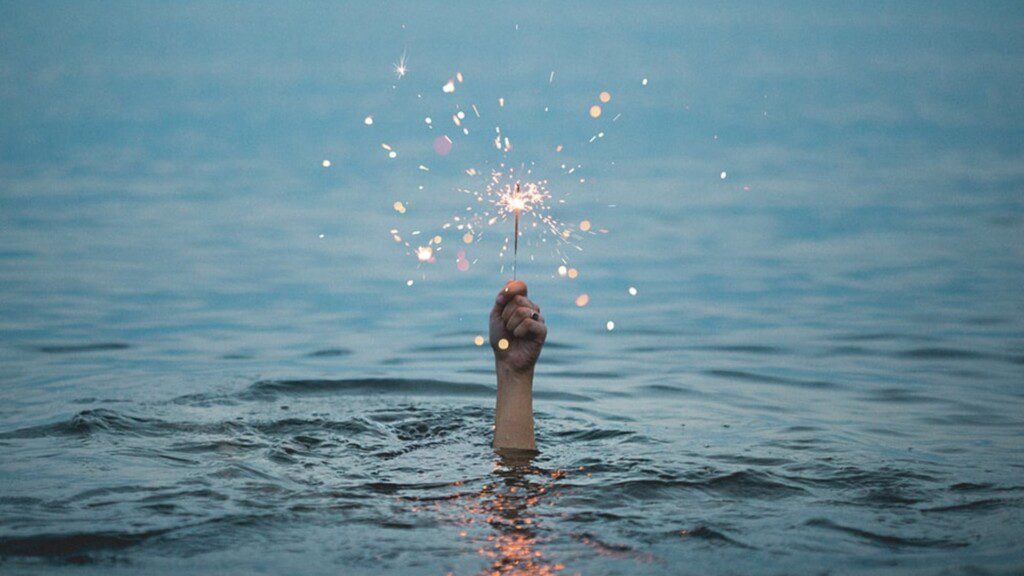
What About The Scratch Test?
Perhaps one of the best-known myth tests to see if a diamond is genuine is to scratch it against a mirror or piece of glass. This method tests the hardness of one material against another and is based on the Mohs scale (the scale upon which minerals are graded in terms of hardness). Unfortunately, this test is not accurate. Glass measures at 5.5 on the Mohs scale. That means that anything with a higher score can scratch it: materials such as quartz, moissanite, and cubic zirconia all rank higher than glass, meaning that they too would leave a scratch.
It is also known or been said that you can use a known diamond to destroy any fake except a synthetic diamond. But if you do that you also take the risk of scratching a real diamond with a real diamond.
| TRUTH: Not recommended. You wouldn’t want to scratch the real thing. |
How To Tell If A Diamond Is Real With A Flashlight?
Some sources claim a flashlight can be used to separate a real diamond from fakes. To tell if a diamond is real with a flashlight, hold the flashlight vertically with the beam shooting up, and place the stone upside down on the lens. Examine how the light from the flashlight passes through and exits the stone. Do you see white light only, or do you see rainbow colors on the surface where the flashlight beam exits the stone? Diamond’s refractive index is high, so white light entering diamond material is separated into component colors prior to exit. For this method, it’s best to use a comparison stone such as CZ or glass which you know is fake. You can tell if a diamond is real with a flashlight when the diamond is observed to successfully separate light into spectral colors, whereas the fake comparison stone does not.
| TRUTH: Don’t use this test as it’s unreliable. Much like the sparkle test, it will not separate diamond from moissanite, and even professionals can’t use it reliably. |

The Loupe Inspection Test
Most jewelers will have access to a jeweler’s loupe; this is a small but powerful magnifying glass that is used to examine metal (hallmarks, solder marks, etc.) and of course, diamonds and gemstones. A jeweler will be looking for any of the naturally forming inclusions that make diamonds unique. However, there is always the possibility that the diamond is real, but has an IF (internally flawless) or FL (flawless) grading. These diamonds are extremely rare so this would be an excellent outcome for your testing!
If the diamond has been graded by a top-tier laboratory such as GIA, AGS, IGI, or GCAL you should be able to see a lab report # on the girdle. You will probably need a 20X loop for this. Once you have the report #, it can be looked up and compared to the diamond specs.
| TRUTH: Not recommended. Most people cannot see VVS to VS1 inclusions, even with a loupe, and most loupes at a jewelers’ counter are low magnification and not of great quality. |
